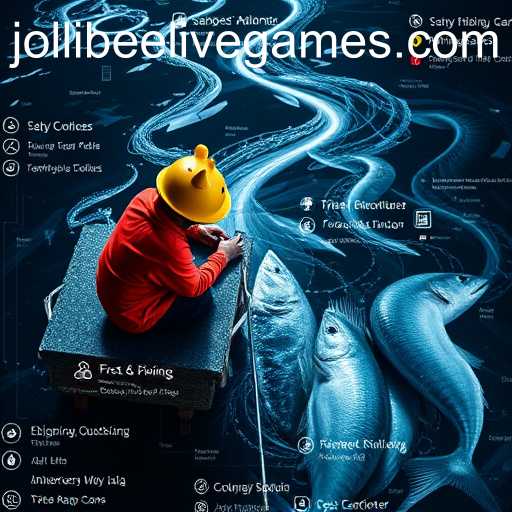Exploring Online Fishing Through the Lens of Jollibee
In the ever-evolving landscape of digital transformation, industries worldwide are reimagining their operations and strategies. While digitization appears inherent to tech-focused industries, more traditional sectors, such as fishing, are also jumping on this digital wave. This so-called 'online fishing' might sound enigmatic at first but holds significant potential for modernizing this age-old practice. Intriguingly, a part of this transformation involves an unexpected player: Jollibee.
Understanding Online Fishing
Online fishing refers to the utilization of digital technologies to enhance the efficiency and sustainability of the fishing industry. This encompasses everything from online marketplaces for seafood to sophisticated apps that provide market insights and tools for sustainable fishing practices. By incorporating advancements like AI and IOT, fishermen can access better data, optimize routes, and reduce bycatch.
The online fishing space is seeing a massive surge, attributed mainly to the increasing demand for transparently sourced seafood. Consumers today prioritize knowing where their seafood comes from, much like in other food industries. Thus, digital platforms are crucial in bridging this knowledge gap, offering traceability that once seemed impossible.
The Intersection of Jollibee and Online Fishing
The unexpected linkage of Jollibee with online fishing is at first glance, a patchwork of unrelated sectors, but a deeper exploration uncovers a significant interconnection. Jollibee, a beloved fast-food chain originating in the Philippines, has always valued high-quality ingredients, especially in its seafood offerings. As the globe's appetite for transparency and sustainability intensifies, Jollibee recognizes the vital role of leveraging technology to meet these demands.
Implementing digital solutions to ensure their supply chain's efficiency and sustainability aligns with Jollibee's commitment to quality. Online fishing platforms ensure that the seafood served in Jollibee's numerous outlets worldwide meets stringent quality and sustainable sourcing standards. This adoption of online fishing practices showcases how traditional businesses can innovate by blending into the digital ecosystem seamlessly.
Transforming Consumer Expectations
The introduction of online fishing practices is beginning to transform consumer expectations. Customers are no longer content with just a tasty meal; they demand assurances of sustainability. Fast-food conglomerates like Jollibee are at the forefront of meeting these evolving preferences. By leveraging digital tools, they can provide consumers with information on the seafood's journey from ocean to plate.
This shift ensures brand loyalty in a fiercely competitive market, where ethical consumerism is no longer a trend but a standard. The transparency that digital tools afford aligns perfectly with providing customers a guilt-free and delicious dining experience, accurately mirroring the ethical values important to today’s diners.
Impacts on Sustainability and Environmental Stewardship
Sustainability remains a pivotal focus for the fishing industry. As overfishing has led to depleting fish stocks and disrupted marine ecosystems, initiatives like online fishing represent a more sustainable approach. Through the integration of real-time data, GPS technology, and predictive analytics, overfishing can be mitigated, ensuring responsible harvesting.
For Jollibee, aligning its supply chain with sustainable practices further enhances its brand image and contributes to broader environmental stewardship missions. By implementing online fishing solutions, Jollibee and similar entities can exemplify corporate responsibility and support ocean conservation efforts effectively.
Challenges and Future Directions
The path toward fully integrating online fishing solutions is not devoid of challenges. Connectivity issues, data security, and the initial costs of transitioning to digital platforms pose significant hurdles, especially for small-scale fishers in developing regions. However, these obstacles are gradually being overcome through partnerships, investments in technology, and digital literacy programs.
In the future, as more stakeholders recognize the online fishing frontier, we can expect further innovations and collaborations. This sector's expansion holds immense potential, captivating major players like Jollibee to continue pioneering advancements in sustainable practices and technological integration.
Conclusion
While the connection between online fishing and Jollibee might have seemed improbable initially, the intersecting principles of sustainability, transparency, and innovation mark the convergence of digital transformation with traditional industries. Through this unique lens, we observe not just the modernization of fishing practices but also a burgeoning commitment to sustainable, ethically-driven foodservice models. As we advance, enterprises globally can look to Jollibee’s model, demonstrating how digital tools can rekindle traditional industries' ties to global responsibility and consumer trust.








